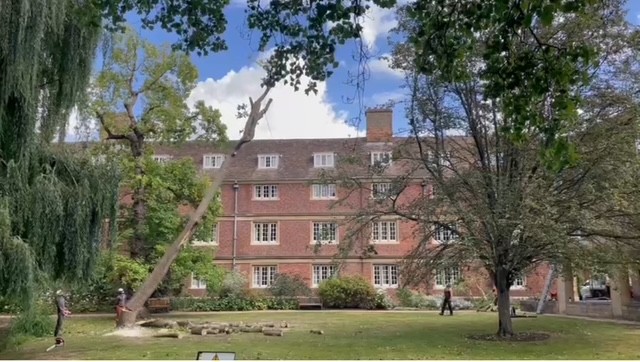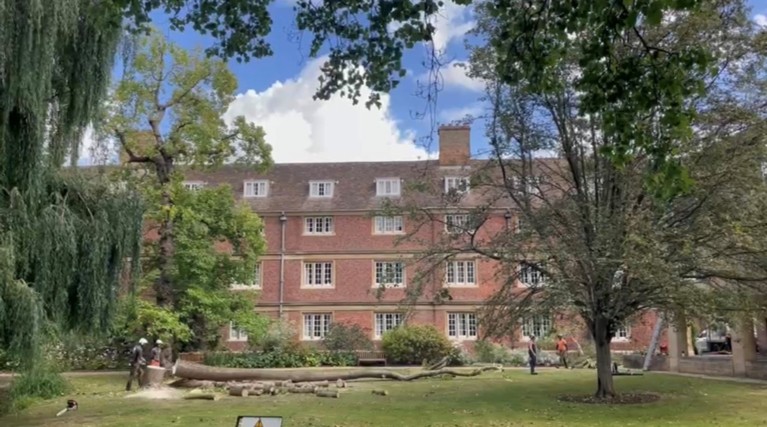Blog
3 September 2025
.jpg)
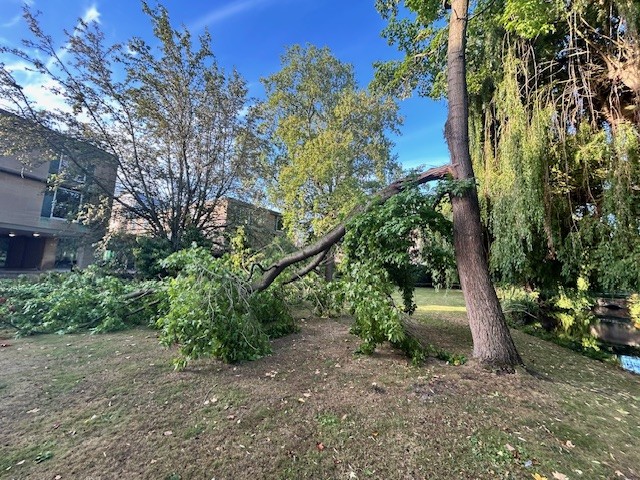
This edition of the garden news has been hard to write as my emotions are a bit raw from the last few days. Unfortunately, on Saturday 30th August, I was notified by the Porter’s Lodge that a large branch had come down on a tree in Chapman’s Garden. I hate receiving calls at home at the weekend because this is nearly always the reason.
I was sent some pictures of the large branch, still attached to the tree, by the Porters. The original phone call had told me that the Tulip tree had split in half, and my stomach just sank at the thought of this monster tree and its location within the college. I was relieved to see from the pictures that it was not the Tulip tree with the failed limb. The tree was in fact the Sweet Gum Tree (Liquidambar styraciflua).
Professor Robert Macfarlane had been in Chapman’s Garden that day and heard the creaking of the branch. Robert managed to capture the moment the branch failed on video. This is something that was very helpful to see in real time. It is rare to capture these moments. However interesting capturing this moment was, I had to remind Robert that maybe it was not best idea to stand close to a tree that is failing. We shared a joke about the ironic thought of Robert dying in the landscape at Emmanuel College, but in all seriousness, please keep safe.
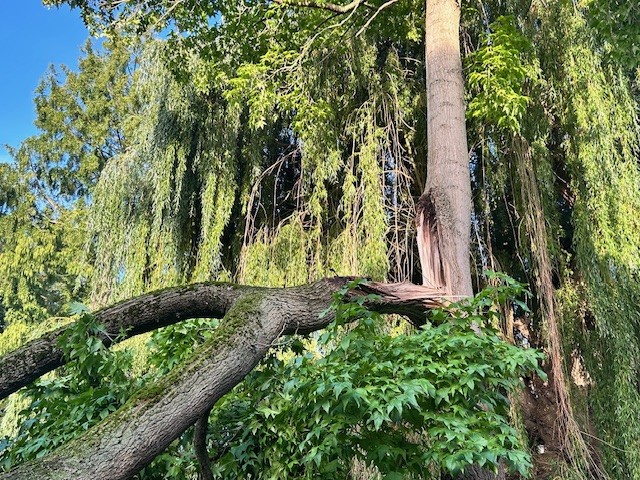
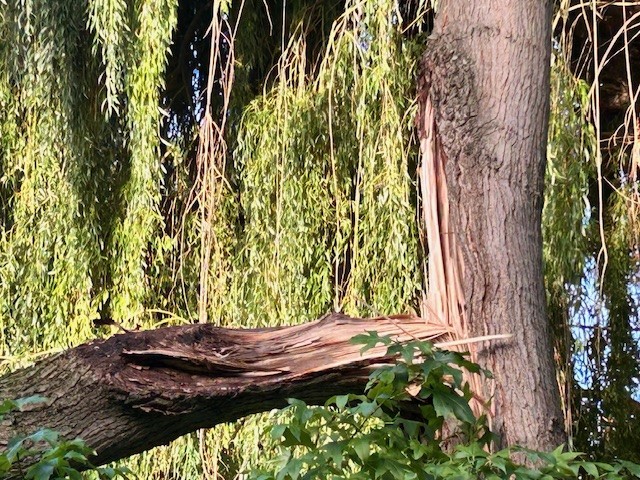
The sad thing about this event was that there was absolutely no warning of this branch failing. The garden team (and I) had been working in Chapman’s Garden all day just the day before. Whenever I am in the gardens, I visually check the trees. There was no sign of damage whatsoever.
The Friday evening saw heavy rainfall, something that at the time I was very grateful for given the months and months of dry hot weather. This could well have been a major contributary factor of the failure of the branch. After a full weekend of consulting with tree surgeons (and consultants), it was felt that the probable cause of the failure was SBD. Sudden Branch Drop Syndrome, also known as Summer Branch Drop (SBD), is the phenomenon of large, mature tree branches failing and falling without warning, often in calm weather, after a hot, dry spell followed by heavy rain. While the precise cause is not fully understood, it’s thought to involve a combination of factors like added weight from foliage or rain, internal water pressure, heat stress, and unseen structural weakness or decay within the branch. There may have been a weakening of the branch due to bark inclusion although that was not visible.
Our most recent professional tree survey had deemed the tree to be in good health but given the recent weather extremes, we can only assume that this was a contributary factor in the branch failing.
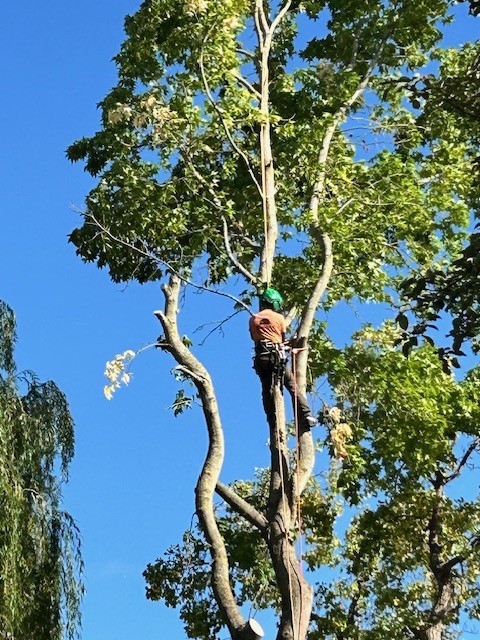
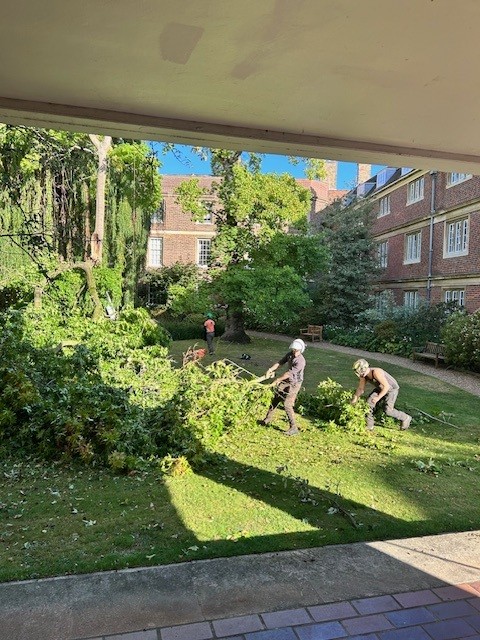
Unfortunately, on closer inspection from the tree surgeons, it was clear that the damage caused from the wound left on the tree, compromised its safety. The wound was so significant that the tree had become top heavy and that the wound had been at a pivot point for the tree. Even in the slight wind, the risk was significant enough to condemn the tree, given its size and location.
The college protocols worked well with securing the area for safety and the tree surgery team did a fantastic job removing the tree given its tricky location and limited access. This was a complex job and tackled with great care with health and safety at its foremost concern.
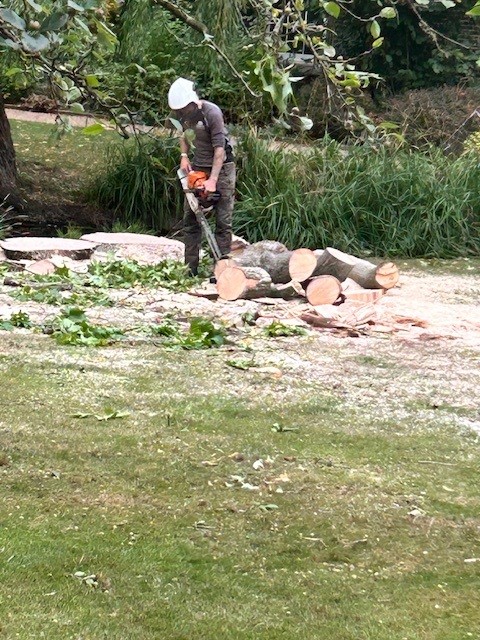
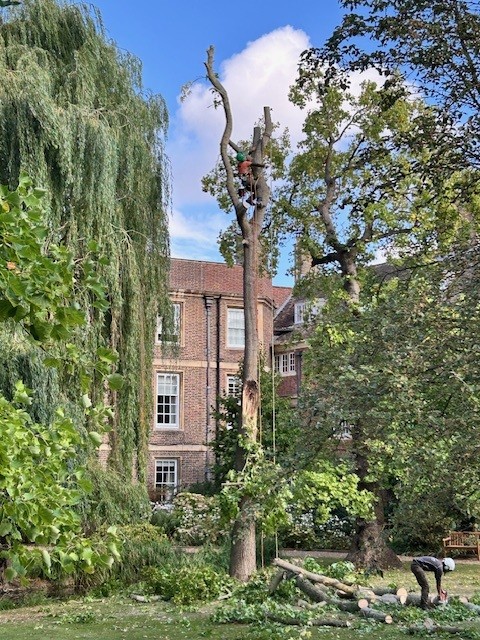
Unfortunately, as a gardener, you become emotionally attached to things such as trees. Some people will not understand the reaction but working within a landscape, seeing and dealing with the trees daily over a period, it’s hard not to feel a connection. The Liquidambar tree in Chapman’s was large and magnificent. The Sweet Gum tree as it is commonly known, produces brilliant autumn foliage colours and is a tree that dominates the landscape at this time of year. The colours of the leaves change from the green pigments, all the way through to reds, with every colour in between. This is a tree I would regularly do plant identifications with, passing on knowledge to my staff and to students. It was something that I would look forward to every Autumn. It punctuated the seasons for me and many others. It was with a heavy heart that I had to say goodbye this week. The tree itself was not that old. The tree rings suggested 48 years old, so it’s been around for half a century. Not long enough. If the wound had been in a different place, the tree might have been saved. The health and safety of others will always decide its outcome.
RIP friend.
Best wishes
Brendon Sims (Head Gardener)
